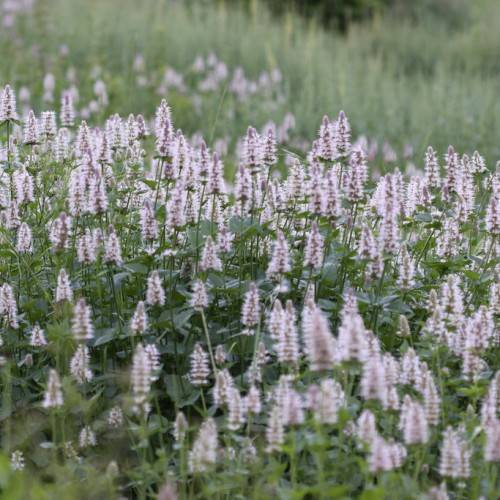
Nettle-Leaved Giant Hyssop
Agastache urticifolia
Watering:
Frequent
Hardiness Zone:
Flowers:
Flowers
Sun:
Sun, Partial Shade
Soil:
Sand
Leaf:
Yes
Growth Rate:
Low
Salt Tolerant:
Yes
watering
Skinner's Agalinis (Agalinis skinneriana (Alph. Wood) Britton) is a native wildflower found in the Eastern United States and Canada. These plants prefer sunny locations with well-drained soils and acidic pH levels. They should be watered moderately throughout the growing season, ensuring the soil remains moist but never soggy. As a general rule of thumb, water deeply and slowly every 1 to 2 weeks, allowing the soil to dry out between waterings. During periods of excessive heat or drought, water more frequently to keep the plant hydrated and healthy. During the winter months, water very lightly, if at all, as this plant is semi-dormant during this season.
sunlight
Skinner's agalinis is a herbaceous perennial plant native to parts of North America. This plant species prefers dry, sandy soils in sunny areas. When exposed to full sunlight, Skinner's Agalinis will flower profusely, producing pinkish-white blooms. When planting it outdoors, strive to provide 6 to 8 hours of direct sunlight each day, ensuring the soil is well-drained. This species will also perform well in part shade. During the early summer months, the plant may require more water than in cooler months, so keep the soil lightly moist during this time.
pruning
Skinner's Agalinis (Agalinis skinneriana (Alph. Wood) Britton) is a low-growing, bushy perennial plant that requires minimal pruning. In general, these plants should only be pruned in late winter or early spring, just before active growth is expected. Pruning should consists mostly of light shaping and removing any dead or damaged branches or shoots. For Skinner's Agalinis, they should be pruned so that there is an even shape to the bush and remove any unwanted branches or shoots that cross-over others or are crowding the center of the plant. It is best to avoid pruning more than a third of the overall growth. When pruning, it is best to cut branches just above a bud or small branch junction. This will encourage new growth and flowering.
